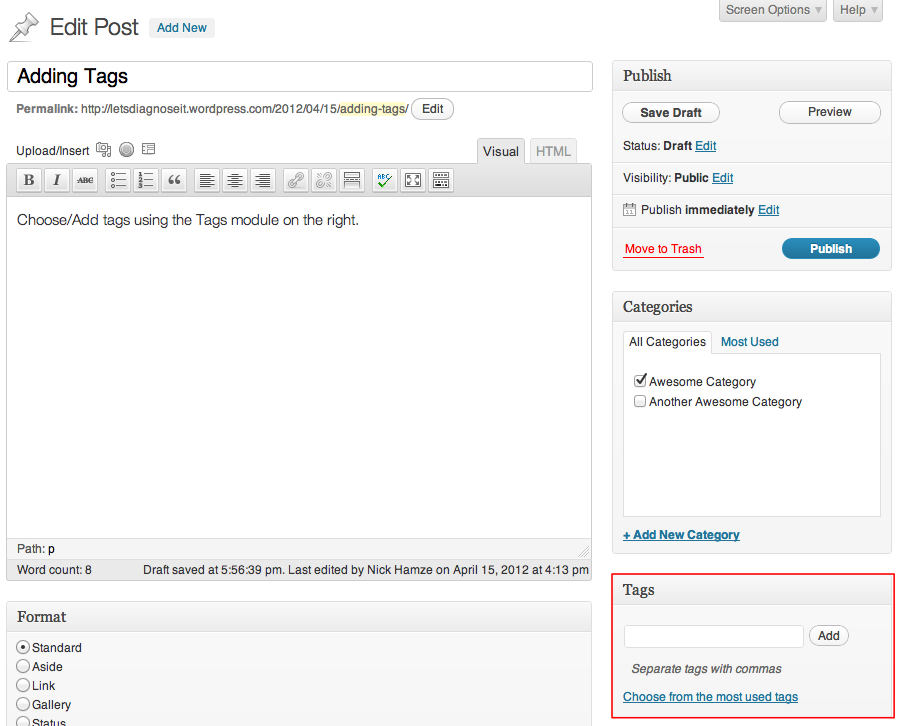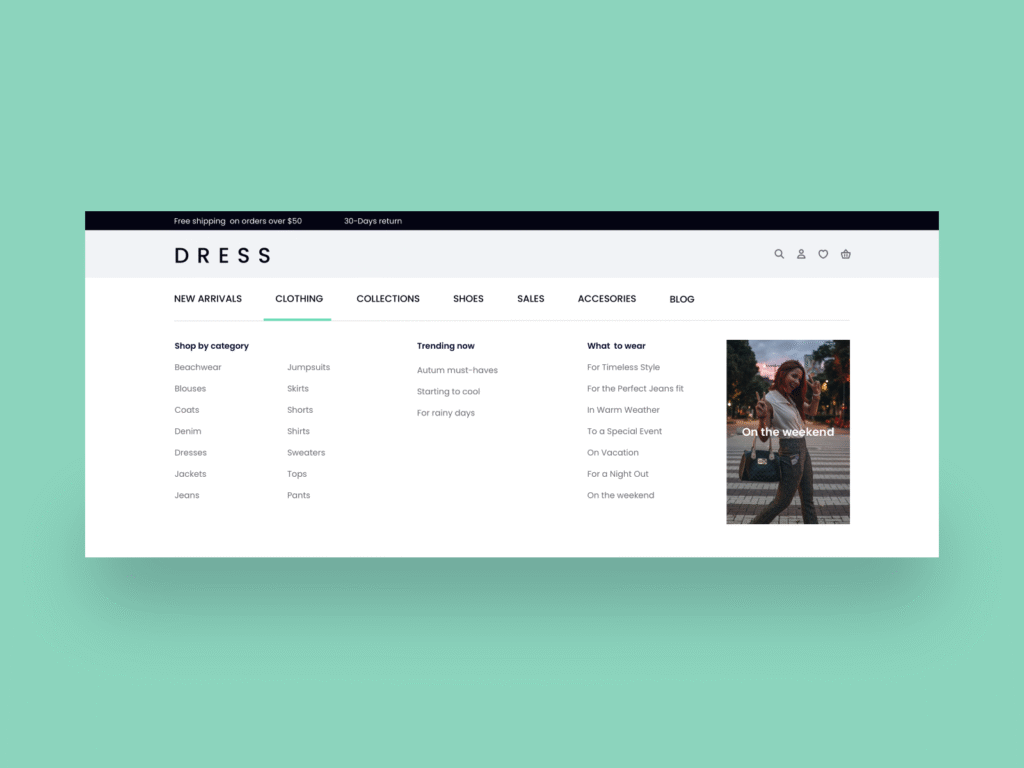How Should You Use Tags in WordPress to Improve Website Navigation? Best Practices Explained
When I first started building my WordPress site I quickly realized that great content alone isn’t enough. Visitors need an easy way to find what they’re looking for or they’ll bounce before discovering all I have to offer. That’s where tags come in—they’re one of the simplest tools for improving navigation and keeping readers engaged.
Using tags the right way helps me organize my posts and makes it easier for visitors to jump between related topics. With just a few clicks I can guide readers through my content and give them a smoother browsing experience. If you want your site to be more user-friendly it’s worth learning how to use tags strategically.
Understanding Tags in WordPress
Tags in WordPress let me group posts by specific topics, creating contextual pathways for visitors. When I assign multiple tags to a post, such as “slot guides”, “poker strategy”, or “site bonuses”, I give readers direct access to comprehensive topic collections. Tags differ from categories, which I use for broad topics; tags capture narrow aspects, such as features, locations, or gameplay tips.
Every tag generates an archive page indexed by search engines. These archives attract targeted visitors interested in the precise subjects referenced by the tags assigned. When I consistently apply tags with precise labels, I increase each page’s relevance, improving navigation.
Below is a table mapping typical WordPress tag use cases and their effects.
| Tag Example | Posts Included | Purpose | Visitor Experience |
|---|---|---|---|
| Slot Machine | Reviews, Tips, Popular Games | Centralize slot-related content | Easier topic discovery |
| Casino Bonuses | Promotions, Bonus Terms | Highlight casino bonus offers | Faster access to current deals |
| Game Strategy | Blackjack, Poker, Roulette | Connect game-specific strategies | Find tactics by game type |
Tags, when I use them with focus, complement categories and create cross-linked trails for deep browsing. I keep tag names concise, unique, and directly relevant to the actual content within each post to avoid dilution. By auditing tag usage periodically, I maintain navigation clarity and prevent duplicate or unused tags.

The Role of Tags in Website Navigation
Tags create navigation shortcuts and streamline content discovery on WordPress sites. When I apply precise, single-topic tags such as “slot guides” or “poker strategy” to each post, users follow those links to find tightly related articles quickly. These archive pages cluster posts by theme, so readers see every guide or strategy tip about a game without hunting through broad categories.
Tags function only as navigational filters; categories outline structure, but tags pull together granular content across multiple areas. By assigning 2-4 relevant tags per post, I ensure users don’t get duplicate pathways or dead-end archives. Every tag increases topic connectivity, making the site feel organized, whether users visit from a search engine or a direct link.
Each tag archive receives automatic indexing by search engines, with URLs that contain the relevant tag names. If I use consistent tag naming conventions like “blackjack bonuses” or “roulette rules,” the archives remain focused, helping both readers and crawlers find logical entry points into the site’s in-depth gaming content.

Table: Typical Tag Effects on Casino Navigation
| Tag Example | Archive Result | User Experience Benefit |
|---|---|---|
| blackjack-strategy | All gameplay guides for blackjack strategy | Quick access to tutorials |
| slots-bonus-codes | List of posts about slots bonus offers | Focused deals and tips |
| live-dealer-tips | Articles on live casino tips | Easy discovery of advice |
| roulette-variations | Overview of all roulette style posts | Side-by-side comparisons |
| mobile-casino-apps | All mobile casino reviews and news | Simplified content discovery |
Status tagging in WordPress navigation helps me keep users engaged, gives search engines logical sitemaps, and builds post-to-post content funnels for every major and minor casino topic.
Best Practices for Using Tags Effectively
Tags keep my WordPress navigation precise and user-friendly when I apply purposeful methods. Consistent tagging principles maintain clean tag archives and streamline content discovery.
Choosing Relevant and Specific Tags
I select tags that describe one distinct aspect per post to improve navigation. For example, I use “slot reviews,” “video poker tips,” or “bonus wagering requirements,” not broad or unrelated terms. I assign 2–5 highly focused tags per article to ensure visitors reach the most relevant topic clusters. I avoid generic tags like “games” that connect too many unrelated articles.
| Example Tag | Description | Applies to |
|---|---|---|
| slot reviews | In-depth reviews | Specific slot posts |
| free spins | Promotions and bonuses | Bonus-related content |
| live dealer tips | Real-time game strategies | Table game guides |
Avoiding Tag Duplication and Overuse
I check existing tag lists before creating new ones to prevent duplicates like “slot-guide,” “slot guides,” and “slotguides” from fragmenting archives. I keep the total tag count manageable, limiting each post to a small, relevant set to avoid bloated tag pages. I consolidate low-content tags by merging similar ones or deleting unused tags to maintain useful navigation pathways.
| Tag Example | Issue | Solution |
|---|---|---|
| slot-guide, slot guides | Duplication | Merge into “slot guides” |
| welcome bonus | Overused on all posts | Limit to true bonus topics |
| table games long tips | Too specific, almost empty | Merge with parent tag |
Creating a Consistent Tagging Structure
I maintain one format for all tags, using lowercase and plural forms where logical—for example, “bonuses” instead of “Bonus” or “BONUSES.” I store tag conventions in a written guide, ensuring every new post uses predefined naming. I periodically audit my tagging structure, removing legacy tags that no longer fit the current taxonomy, to keep archives clean and prevent confusion.
Sample Tagging Pattern for Casino Content
| Tag Format | Example Use | Structure Rule |
|---|---|---|
| [topic] + [aspect] | “blackjack strategies” | Always [topic] then [aspect] |
| lowercase, plural | “tournaments” | Never use Title Case or singular |
Optimizing Tag Pages for User Experience
Optimizing tag pages in WordPress gives visitors targeted paths to explore related posts, increasing the time they spend on my site. I streamline tag archives and customize their design for better navigation and engagement.
Improving Findability Through Tag Archives
Structuring tag archives organizes content for quick access. I focus on:
- Limiting each tag page to only highly relevant posts to reduce irrelevant search results.
- Writing concise descriptions for each tag to display at the top of tag archive pages, summarizing content scope and features.
- Ensuring paginated navigation on tag archives to help users browse large collections without getting lost.
- Linking related tag archives in sidebars or at the end of content to promote deeper exploration.
Tag Archive Features and User Benefits
| Tag Archive Feature | Casino Context Example | User Experience Benefit |
|---|---|---|
| Tag Description | “Slot Reviews” tag intro | Sets expectations about listed reviews |
| Related Tags List | “Video Poker Tips,” “Jackpot Strategies” | Connects to complementary topics |
| Pagination | Navigating 100+ bonus guides | Lets users scan results quickly |
| Clean URL Structure | /tag/free-spins | Improves shareability and recall |
Customizing Tag Page Appearance
Adjusting the look of tag pages improves navigation. I:
- Add custom tag archive templates (via
archive-tag.php) to match site branding and highlight post snippets. - Display post thumbnails, excerpts, and publish dates to help readers choose what interests them next.
- Insert filter options within archives—like by post date or popularity—to facilitate faster narrowing of choices.
- Use widgets or custom blocks in archive sidebars to highlight trending topics, recent posts, or top tags, driving further clicks.
Custom tag pages create distinctive, user-friendly navigation points, especially for casino categories like slot guides or site promotions, ensuring users find the content that matches their interests instantly.
Monitoring and Refining Your Tagging Strategy
I monitor tag performance to ensure WordPress navigation drives higher engagement. Tag performance metrics, like click-through rate and time on tag archive, highlight user interest in specific topics. If I notice low interactions on certain casino-related tags, such as “slot bonuses” or “poker strategies”, I review tag assignment and relevance.
I use built-in WordPress analytics or integrations like Google Analytics to track visitor flows through tag archives. Comparing bounce rates between tags, I identify underperforming pages that may confuse or overwhelm users. I regularly update or merge redundant casino tags, ensuring only high-value archives remain accessible.
I audit existing tags monthly and prune those not driving traffic, keeping navigation streamlined. Tags with fewer than three associated posts, for example, often signal over-fragmentation, so I either consolidate them or merge them with higher-traffic alternatives.
I refine casino tag names if they’re unclear or misleading based on search data and user trends. I also expand popular tag archives by linking related posts and creating new tags only if gaps emerge in high-intent topics.
Tag Monitoring Metrics Table
| Metric | Description | Action Trigger Example |
|---|---|---|
| Tag archive views | Total visits to each tag’s archive | Less than 50/month: Review or merge |
| CTR on tag links | Click-through rate from tag clouds or post tags | Under 1%: Reword or reposition tags |
| Avg. time on tag page | Duration spent on a tag archive page | Under 30s: Improve content relevance |
| # of posts per tag | Total posts assigned to each casino tag | Fewer than 3: Merge or delete |
| Bounce rate | Percentage exiting from tag archives | Over 75%: Optimize archive layout |
I optimize my casino tag structure by running this tag metrics audit monthly, which keeps navigation efficient for readers searching for gaming strategies or bonus information. This ongoing monitoring lets me quickly adapt to user preferences and strengthen site structure for both users and search engines.

Conclusion
Using tags thoughtfully in WordPress can transform the way visitors interact with my site. When I approach tagging as an ongoing process—rather than a one-time setup—I keep navigation intuitive and content easy to discover.
A well-maintained tagging system not only helps users find what they want but also signals to search engines that my site is organized and valuable. With a little effort and regular review I can turn tags into one of my most powerful tools for building a user-friendly and engaging website.